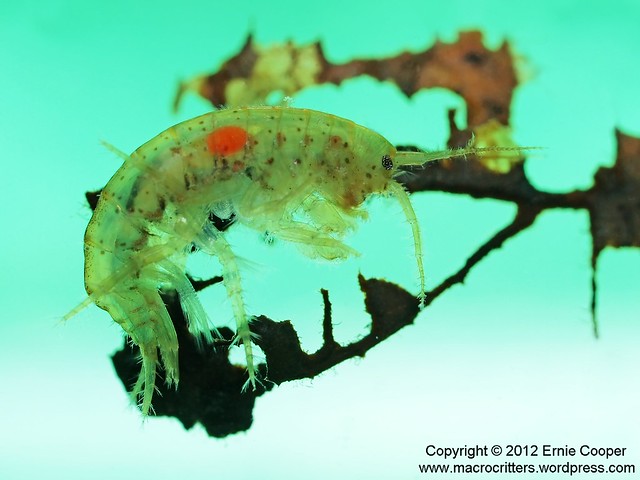Posted by Ecooper on 10-01-2013 22:01
#1

amphipod tiff spotted edit colour_filtered unsharpen_filtered by ernie.cooper, on Flickr
It has been waaaaay too long since I posted any photos. Funny how life can speed-up and suck all your time—especially over Christmas holidays when you have kids! Anyhow, I’m back and after a 2-week hiatus I have finally posted some photos on my blog of freshwater amphipods (that I took last summer). The photo above is of a very pretty specimen of Gammarus lacustris; apparently the only species of freshwater gammarid amphipod found in British Columbia.
Whenever (and wherever) I have collected freshwater Gammarus in the past, they have been coloured drab shades of brown and olive green. But as you can see, the specimens I collected from this particular stream showed some real diversity in colouration, including some really pretty specimens with bright red spots on a translucent yellowish body. Others had a single very obvious bright red spot on their side. I still don’t know if the spot was on the critter’s exoskeleton or was something inside the body…

amphipod red spot sharpened copyright ernie cooper_filtered by ernie.cooper, on Flickr
I really need to get back to that stream again this summer to collect more of these critters and do a better job of photographing them…
Cheers,
EC
www.macrocritters.wordpress.com